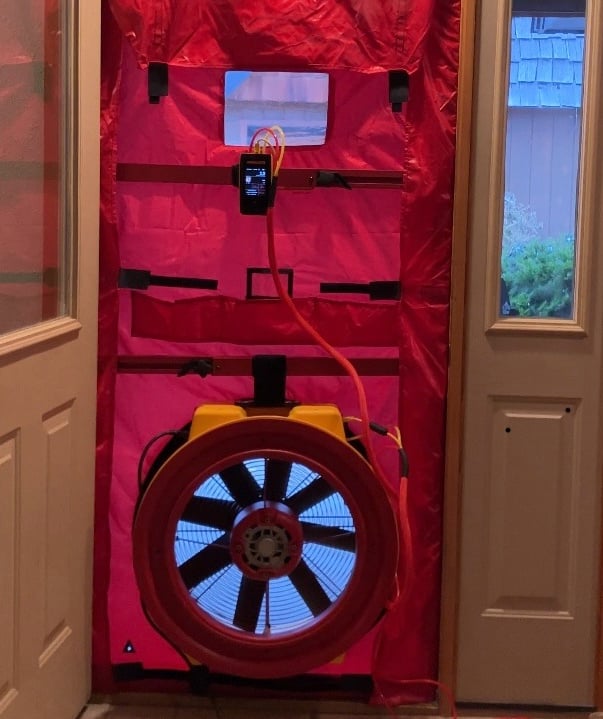Understanding the Role of a Blower Door and the Importance of Airtightness in Your Home


When it comes to creating an energy-efficient and comfortable living space, one crucial aspect that often goes unnoticed is the airtightness of a house. An airtight home not only helps in reducing energy consumption and utility bills but also improves indoor air quality and comfort. In this article, we will explore the role of a blower door, the significance of achieving a low ACH 50 (Air Changes per Hour at 50 Pascals), and the need for mechanical ventilation in tightly sealed homes.
What is a Blower Door?
A blower door is a diagnostic tool used to measure the airtightness of a building. It consists of a powerful fan that is mounted on an exterior door frame and a pressure gauge that measures the pressure difference between the inside and outside of the house. By creating a pressure difference, the blower door helps identify air leaks and assesses the overall air infiltration rate of the building.
Understanding ACH 50
ACH 50, also known as Air Changes per Hour at 50 Pascals, is a measurement used to quantify the airtightness of a building. It represents the number of times the entire volume of air within a house is exchanged per hour when a pressure difference of 50 Pascals is applied. The lower the ACH 50 value, the tighter the building envelope, indicating reduced air leakage.
Typically, a well-sealed and energy-efficient home should aim for an ACH 50 value of 3 or lower. This level of airtightness ensures that the house retains conditioned air, minimizes energy loss, and prevents drafts, moisture, and pollutants from entering the living space.
The Importance of Airtightness
Having an airtight house offers several benefits. Firstly, it reduces the amount of conditioned air that escapes from the building, resulting in lower energy consumption and reduced utility bills. Secondly, airtightness helps maintain a consistent indoor temperature, preventing drafts and cold spots. This enhances occupant comfort and reduces the need for excessive heating or cooling.
Furthermore, an airtight home improves indoor air quality by preventing the infiltration of outdoor pollutants, allergens, and dust. This is particularly important for individuals with respiratory conditions or allergies. Additionally, airtightness helps control moisture levels, reducing the risk of mold growth and associated health issues. An airtight home may also result in less bugs finding their way into your home.
Mechanical Ventilation in Tight Homes
While achieving a high level of airtightness is desirable, it is essential to ensure proper ventilation in tightly sealed homes. Mechanical ventilation systems, such as heat recovery ventilators (HRVs) or energy recovery ventilators (ERVs), play a crucial role in maintaining indoor air quality.
These systems introduce fresh outdoor air into the house while simultaneously expelling stale indoor air. HRVs and ERVs recover heat or energy from the outgoing air, minimizing energy loss and ensuring a continuous supply of fresh air without compromising energy efficiency.
It is important to note that mechanical ventilation is particularly necessary in homes with low ACH 50 values, as natural air leakage is minimal. Properly designed and installed ventilation systems help remove excess moisture, odors, and pollutants, ensuring a healthy and comfortable living environment.
In conclusion, understanding the role of a blower door, achieving a low ACH 50 value, and ensuring mechanical ventilation in tightly sealed homes are all integral to creating an energy-efficient, comfortable, and healthy living space. By prioritizing airtightness and ventilation, homeowners can enjoy reduced energy costs, improved indoor air quality, and enhanced overall comfort.
That's it, until next time!
